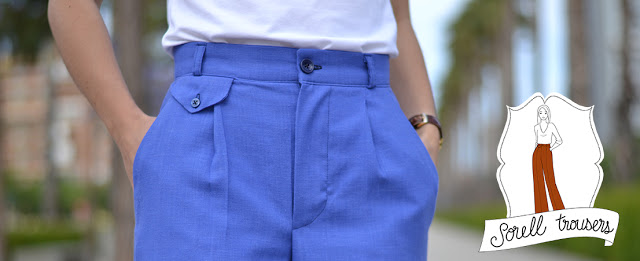
After a post last week, here I am again, back from my hibernation with 2 new patterns: The Xerea Dress and the Sorell Trousers.Let’s talk about the latter today:


The Sorell trousers are high waist pants with a lot of details inspired by men’s trousers (even the zipper side!). And you’ll recognize the style of the Hollywood actresses I admire: Katherine Hepburn’s casual confidence, Marlene Dietrich’s androgyny, Vivien Leigh’s modernity…
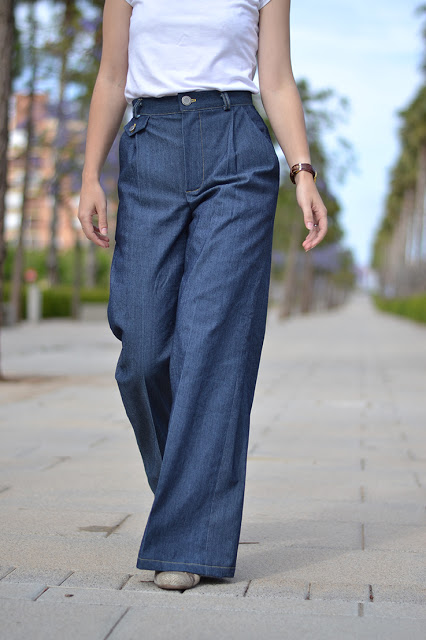
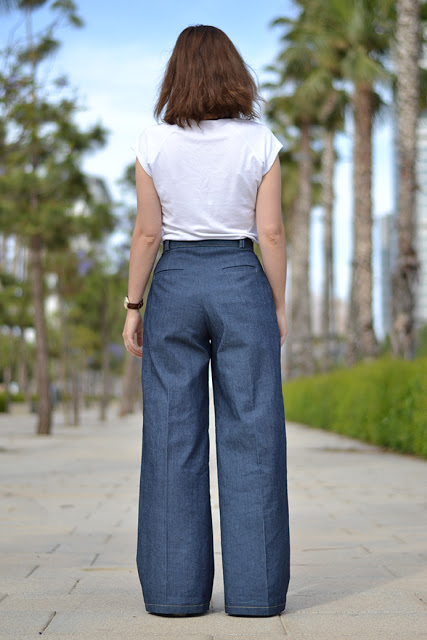
If you’re a fan of pockets, you’ll be more than happy with its 4 kinds of pockets: slash pockets, watch pockets and then View A has back welt pocket whereas View B has patch pockets. Of course you can choose to make only the front slash pockets to make it easier or if you plan to use a printed fabric.

Talking about fabrics: Sorell is perfect with a woolen fabric for winter, linen for summer or denim for a retro look. And if your fabric has a little bit of stretch, no problem (but I wouldn’t recommend anything with more than 3 %).
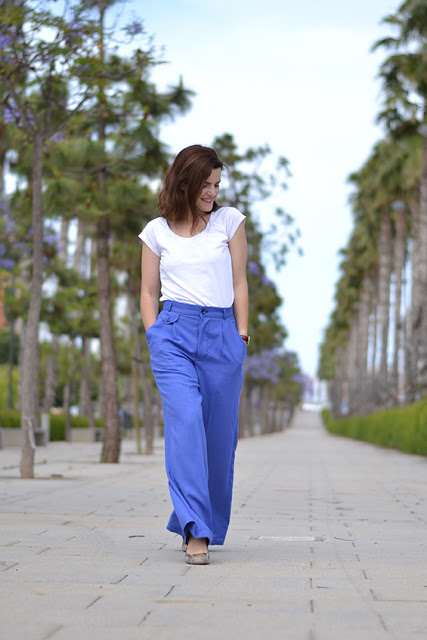 For a vintage look, the trousers legs are wide but the waist and hips are fitted so if you are between 2 sizes or you’re afraid to be unable to sit after lunch, choose the bigger. Anyway, the best solution it still to make a muslin (even a simplified one with the main pieces).
For a vintage look, the trousers legs are wide but the waist and hips are fitted so if you are between 2 sizes or you’re afraid to be unable to sit after lunch, choose the bigger. Anyway, the best solution it still to make a muslin (even a simplified one with the main pieces).I’ll be coming back with a step-by-step photo tutorial very soon, so even if it’s your first pair of trousers, don’t be afraid to try it!
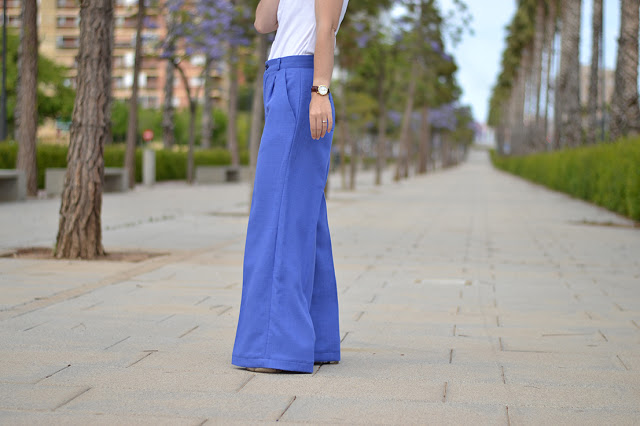 Just a word on the fabrics i used: View A is made in denim from The Sweet Mercerie and View B in a linen/silk mix from Julián López.
Just a word on the fabrics i used: View A is made in denim from The Sweet Mercerie and View B in a linen/silk mix from Julián López.

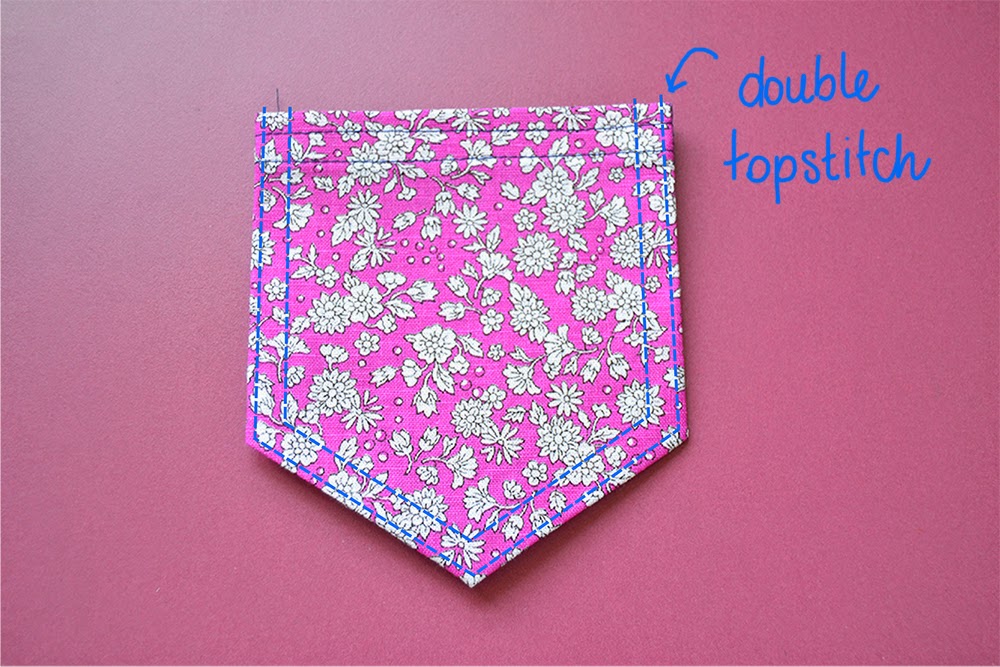
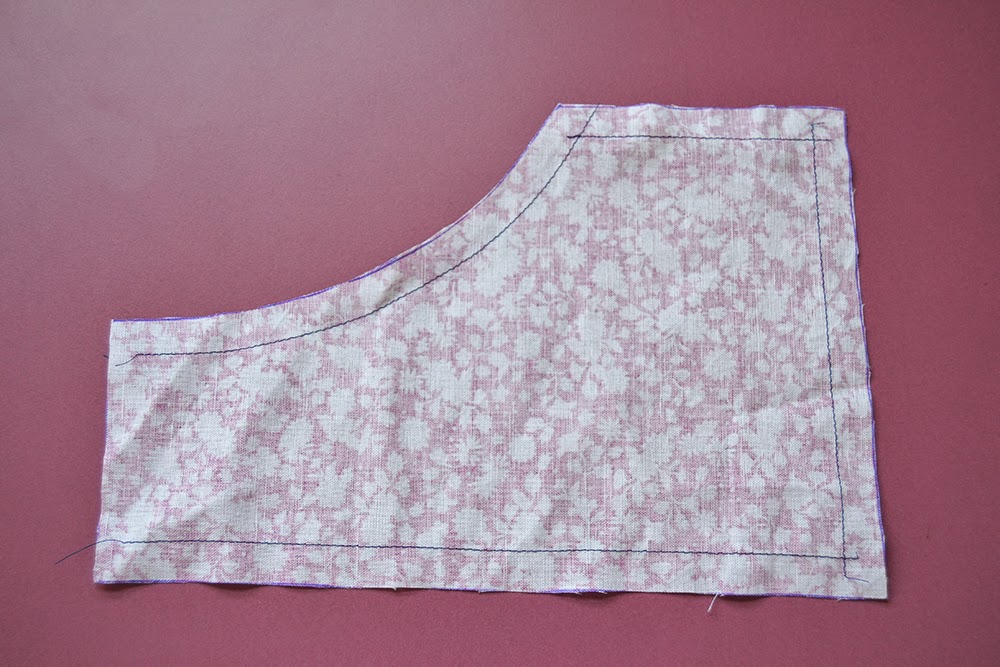 To help you fold the seam allowances in, staystitch all around the front pocket just inside the seam allowance (about 1,2 cm from the edge or 1/2″). You don’t need to staystitch the top edge of the front pocket.
To help you fold the seam allowances in, staystitch all around the front pocket just inside the seam allowance (about 1,2 cm from the edge or 1/2″). You don’t need to staystitch the top edge of the front pocket. Clip the seam allowance of pocket opening: that’s the curved edge. Be careful not to cut the stitches!
Clip the seam allowance of pocket opening: that’s the curved edge. Be careful not to cut the stitches!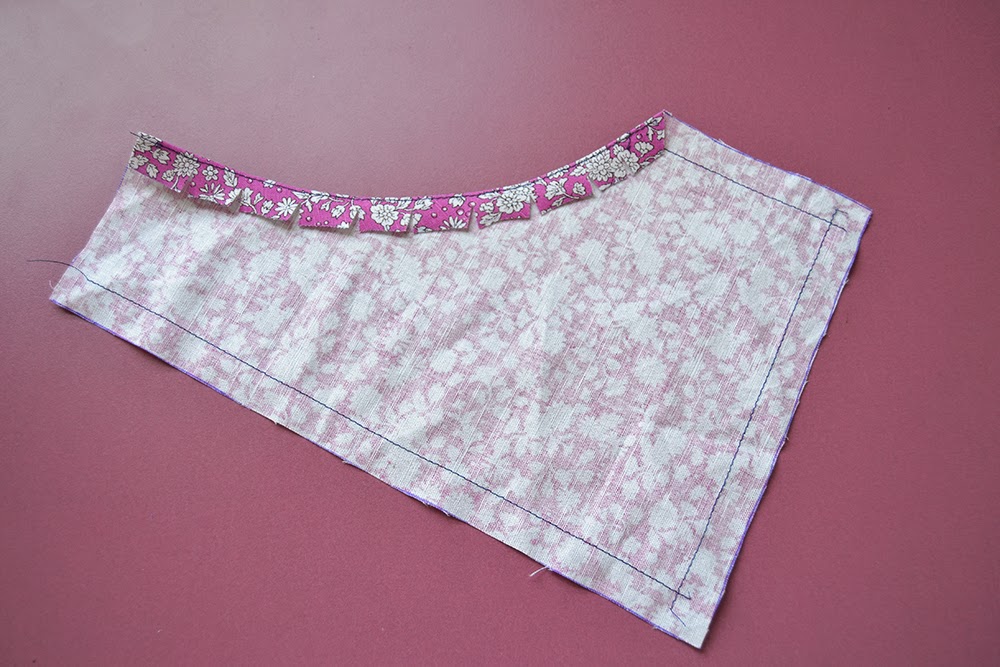 Fold the seam allowance to the inside and press.
Fold the seam allowance to the inside and press. Stitch two rows of topstitching along the curved edge. Here is how I like to sew my topstitching so that the distance between the rows is always the same:
Stitch two rows of topstitching along the curved edge. Here is how I like to sew my topstitching so that the distance between the rows is always the same:
 I like to stitch the first row about 3 mm (1/8″) from the edge. Then I like to place the edge of the needle plate against the first stitching line and follow it (that’s roughly 8 mm or 5/16″).
I like to stitch the first row about 3 mm (1/8″) from the edge. Then I like to place the edge of the needle plate against the first stitching line and follow it (that’s roughly 8 mm or 5/16″).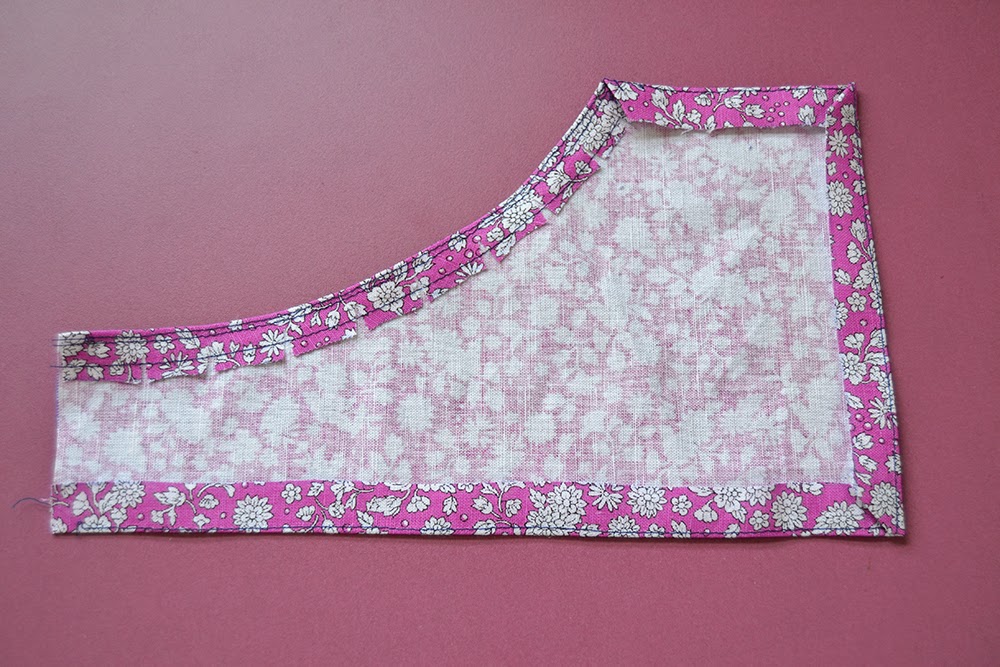 Fold the sides and bottom seam allowances along the staystitch. Make sure the staystitching line is on the inside of the seam allowances.
Fold the sides and bottom seam allowances along the staystitch. Make sure the staystitching line is on the inside of the seam allowances.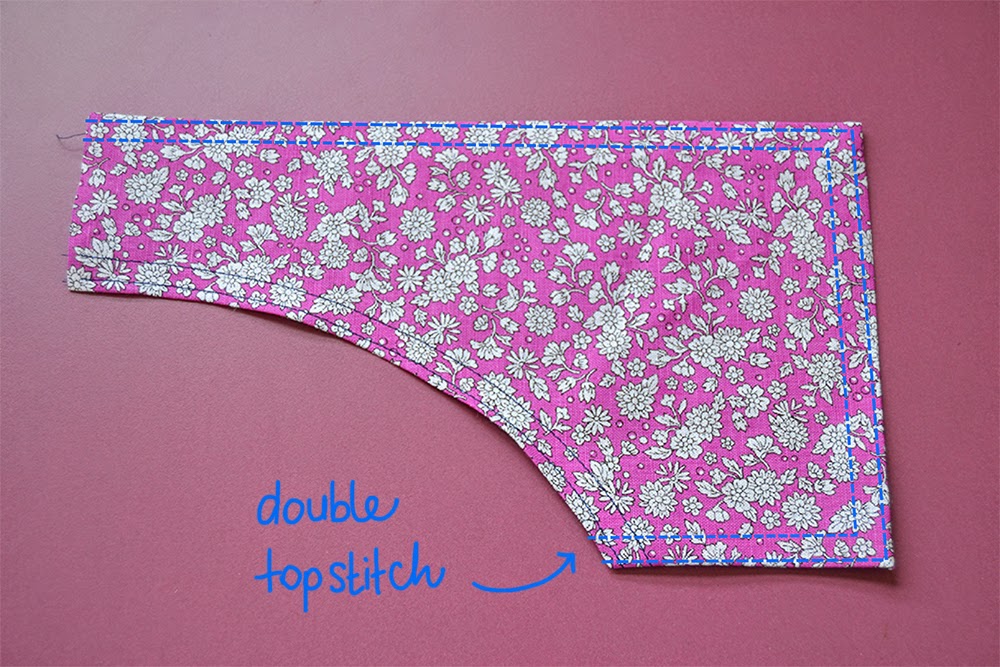 Place the pocket on the dungarees front piece, matching the marks and pin it in place. The top edges of the pocket and the front piece should match. Then stitch two rows of topstitching along the sides and bottom, leaving the curved and top edges open.
Place the pocket on the dungarees front piece, matching the marks and pin it in place. The top edges of the pocket and the front piece should match. Then stitch two rows of topstitching along the sides and bottom, leaving the curved and top edges open.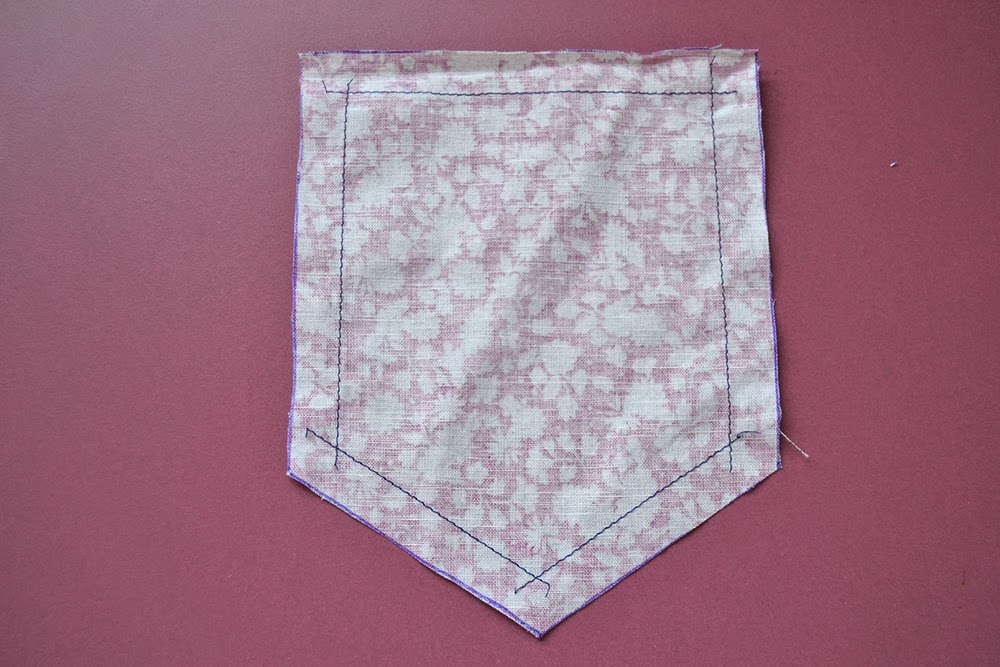 Staystitch all around the front pocket just inside the seam allowance (about 1,2 cm from the edge or 1/2″).
Staystitch all around the front pocket just inside the seam allowance (about 1,2 cm from the edge or 1/2″).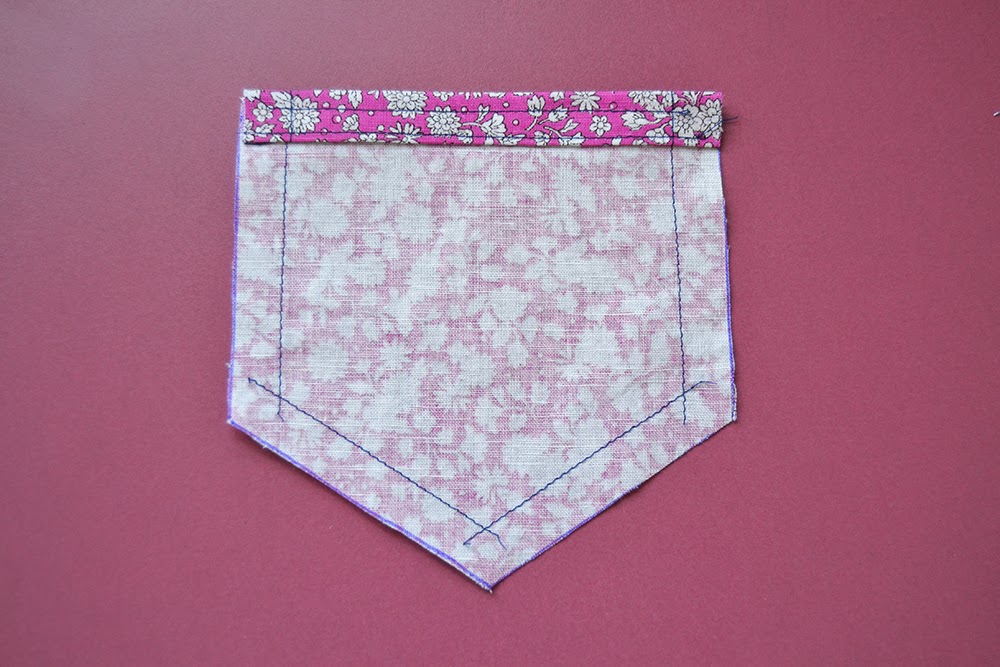
 Turn the top edge along the staystitch, press. Fold again and stitch two rows of topstitching.
Turn the top edge along the staystitch, press. Fold again and stitch two rows of topstitching.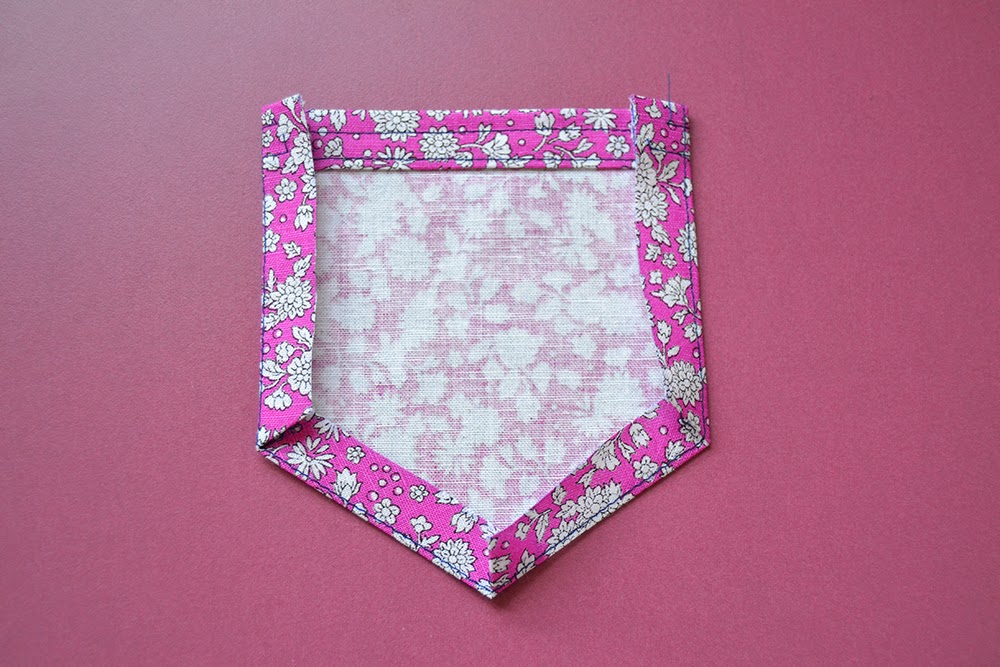 Fold the sides and bottom seam allowances along the staystitch. Make sure the staystitching line is on the inside of the seam allowances. Press.
Fold the sides and bottom seam allowances along the staystitch. Make sure the staystitching line is on the inside of the seam allowances. Press.
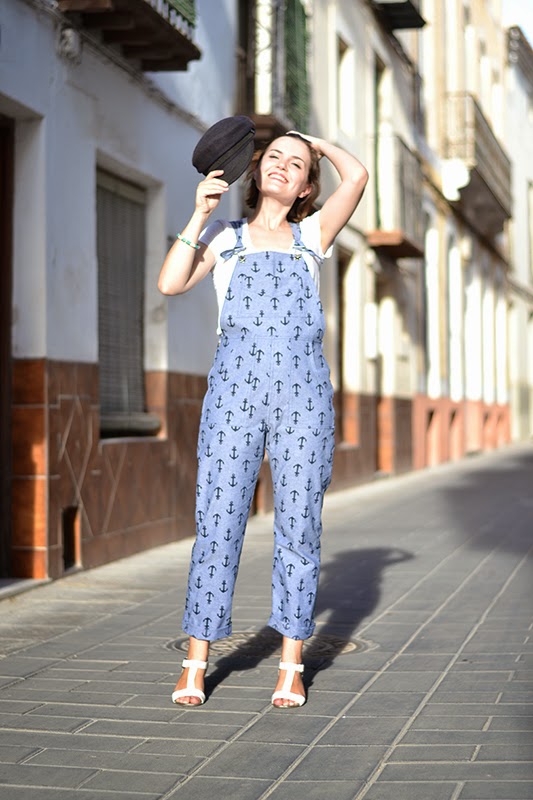 Dungarees (or overalls as you wish!) for a grownup? Really? Well YES of course!
Dungarees (or overalls as you wish!) for a grownup? Really? Well YES of course!
